AUGUSTA (Day 2 - part 1)
We hit the road around 8 am. I had booked us a tour of the state house (the capitol building) in Augusta at 10 am and it was about an hour drive. Originally we also had a tour scheduled for the governor's mansion (also called the Blaine House), but unfortunately that got cancelled due to construction on the property.
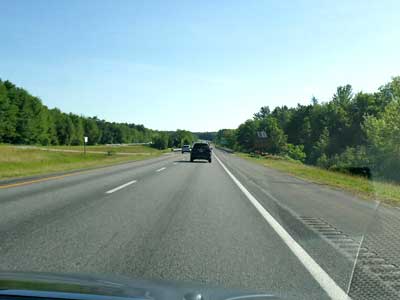
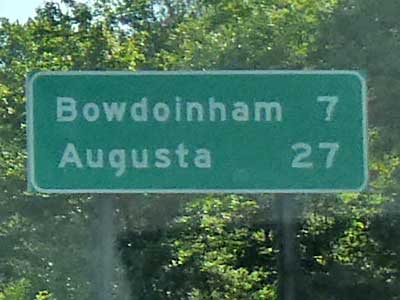
Highway 295
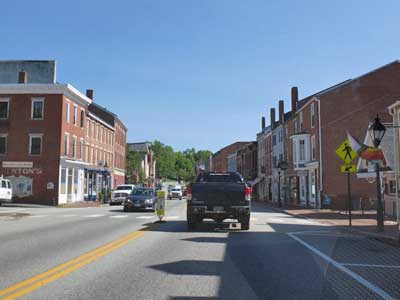
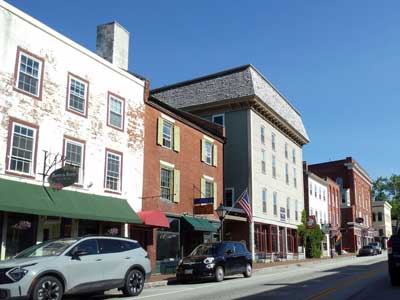
Downtown Hallowell on Highway 201
We were early when we arrived at the state house so we went for a walk around the area.
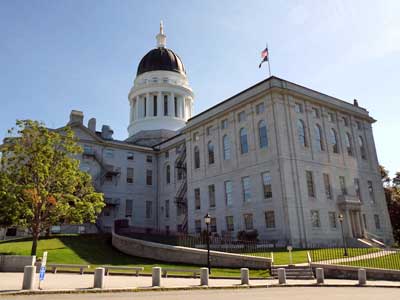
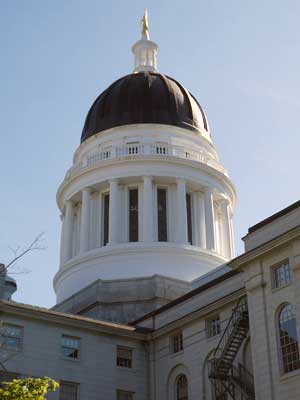
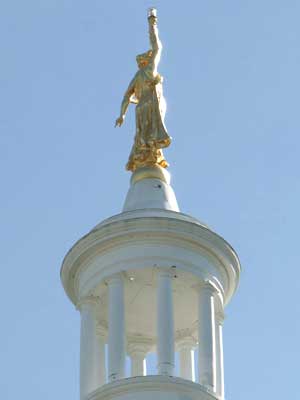
Lady of Wisdom
The large copper statues the crowns the building was made by William Clark Nobel (1858 - 1938). The building was completed in 1832 and originally capped by a cupola. When it was remodeled in 1909-10, this was replaced with a copper-clad dome... complete with statue. Sometimes known as Minerva, she stands 12 feet tall (15 feet including her pine-branch torch). She was built in several pieces that were brazed together with silver solder. It was then gilded in gold.
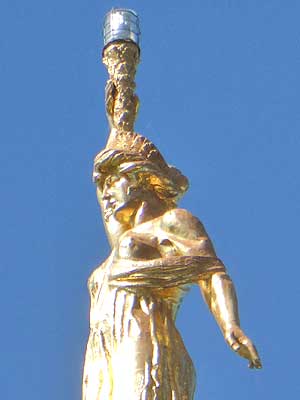
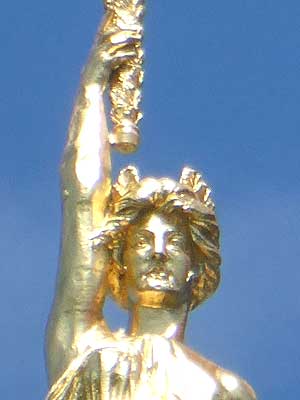
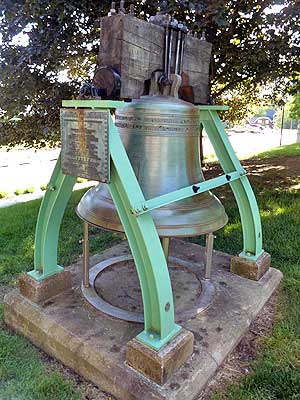
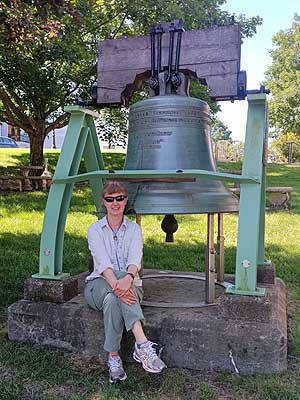
This is a copy of the Liberty Bell (the original resides in Philadelphia, PA). In 1950, the U.S. Department of the Treasury ordered 57 Liberty Bell replicas as part of a large push to encourage investments in federal saving bonds. "Save for Your Independence!" The bells toured the country and were then gifted to every state and territory once the bond drive was over. What each state did with its bell was up to it.
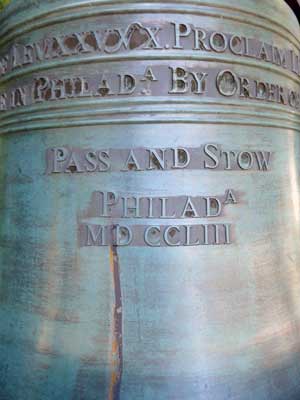
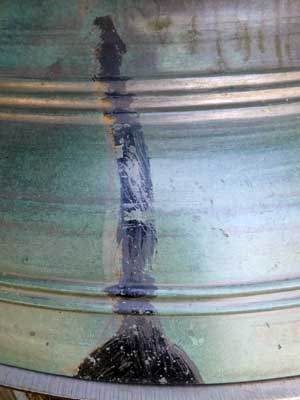
The copy has the same dimension, weight (2,080) pounds and inscription. Only the famous crack has been painted on, allowing the bell to still ring. It has an aged-oak yoke, iron straps and hand-forged bolts.
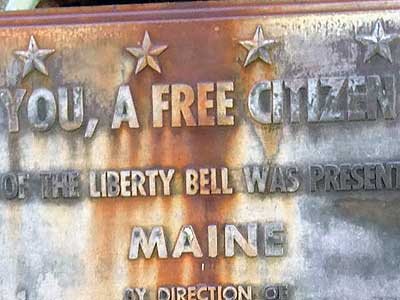
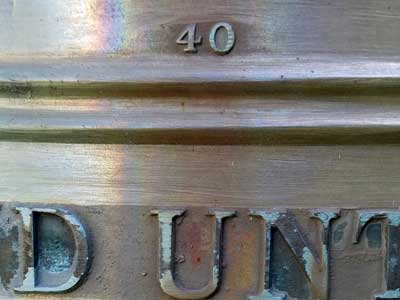
Bell #40 of the series
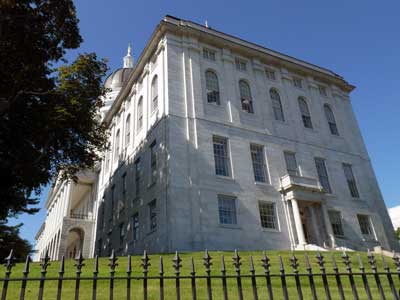
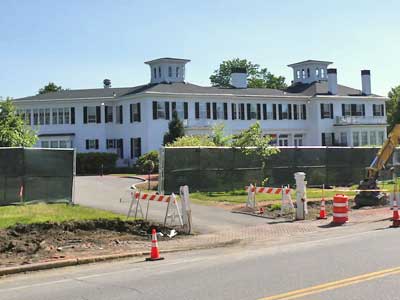
A view of the capitol perched on top of Weston's Hill ... and the governor's mansion under construction.
We arrived at a large park. Known as Capitol Park, it spans from the state house to the Kennebec River. It was established in 1827 with the intention of establishing a dignified setting for viewing the building. Over the years, it has served other purposes as well... including being a camp site and parade grounds during the Civil War. State law now says that there must always to be an open space in front of the capitol building.
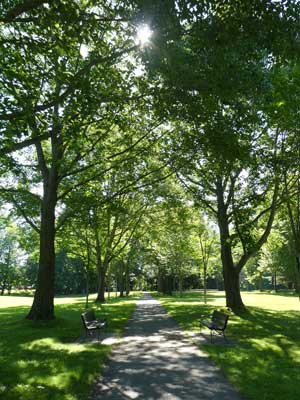

Beautiful large trees... and a local inhabitant, an Eastern Gray Squirrel.
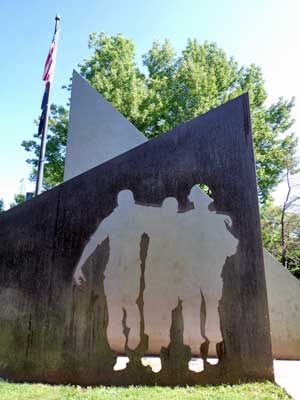
The Vietnam Veterans' Memorial was dedicated in 1985. Two soldiers support a wounded third soldier. Of Maine's 16,000 Vietnam veterans, 322 died and 18 are still listed as missing.
We then arrived at tomb. It was originally created for the eighth governor of Maine, Enoch Lincoln (1788 - 1829, and a distant relative of President Abraham Lincoln). He died at the age of 40, before his term in office expired. He was initially buried in the grounds that would become the park. A granite tomb was erected in 1842 to house his remains and other officials who died at the state capitol.
In 1903, the state legislature ordered the tomb to be repaired as some of the original caskets had decayed. Then in 1991, an inspection revealed that Lincoln's casket and body were missing. It was discovered that the tomb had been cleaned in 1950s and its theorized that the cleaners may have misplaced the body. It has never been found.
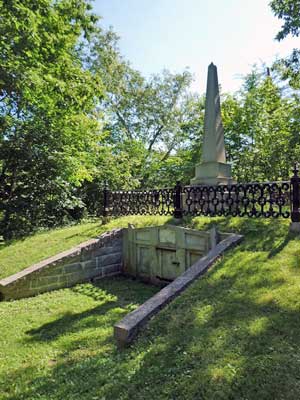
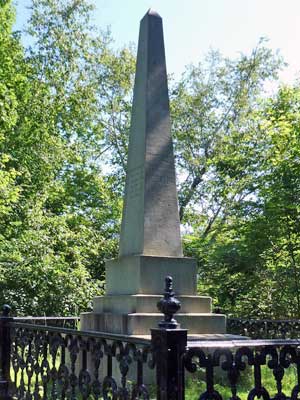
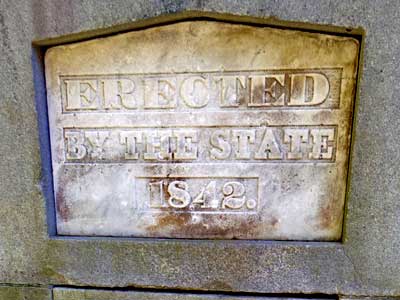
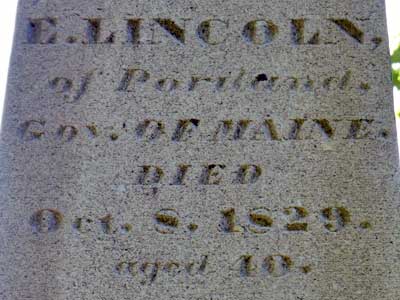
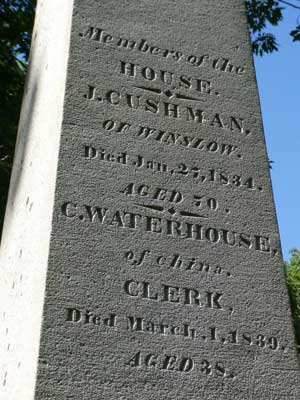
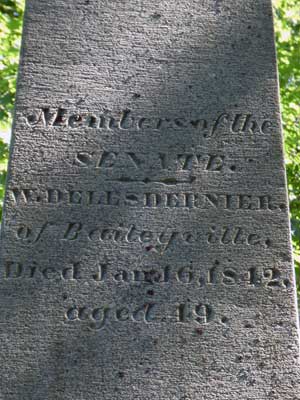
Others in the tomb:
Members of the House: Joshua Cushman (1761 - 1834) and Charles Waterhouse (unknown - 1839)
Member of the Senate: William Delesdernier (1792 or 93 - 1842)
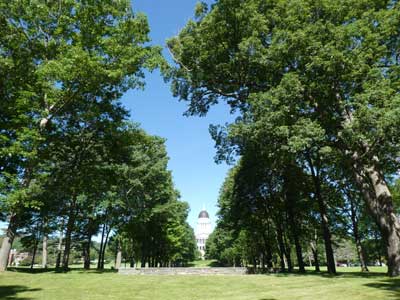
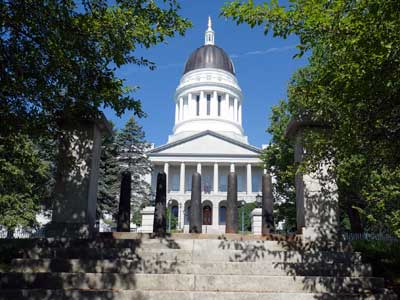
Beautiful view all the way up to the capitol building
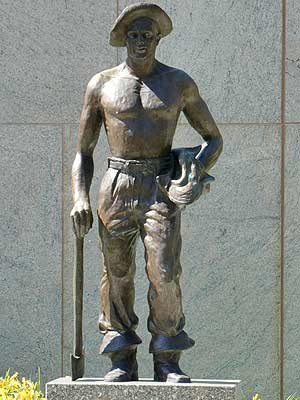
This statue was added in 2001. Identical statues can be found all over the US. It honors the young men of the Civilian Conservation Corp (CCC) from 1933 to 1942. In Maine, over 17,000 unemployed men, aged 17 to 25, were given conservation jobs in state and national parks and forests. They built roads and bridges (including in Acadia National Park), trails, tunnels, buildings, planted trees (in this Capitol Park as well) and so on . They earned $30 per month, most of which they sent back to their families. The government provided them with room, board, clothing, tools and education.
It was time for our tour to start so we headed back into the building.
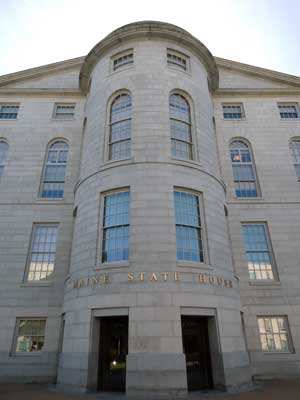
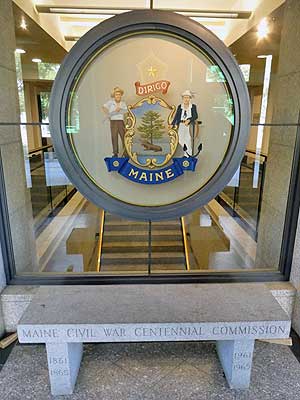
The entrance ... the state seal
In the center on a silver shield is a white pine tree (the state tree, representing Maine's forestry and lumber industries) and a moose (the state animal, representing wilderness and natural resources).
On one side, a farmer rests on his scythe (agriculture) while on the other a sailor leans on an anchor (extensive coastline and maritime industries). Above it all shines the north star (the country's northernmost state at the time of its founding).
The motto DIRIGO is Latin for "I lead."
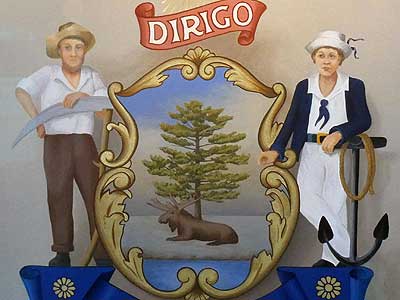

We met with Crystal, our guide, who said we were still waiting on several more visitors. So we watched a slideshow while we waited.
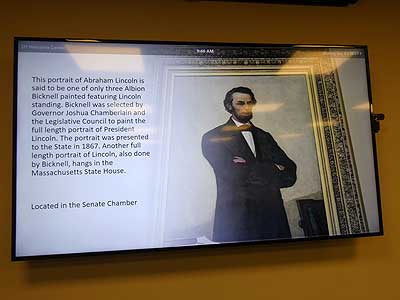
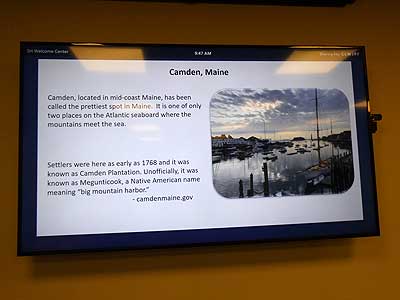
A portrait of Abraham Lincoln hangs in the Senate chamber. ... The town of Camden is one of only two places on the Atlantic seaboard where the mountains meet the sea.


Maine produces 99% of the country's blueberries. Maine is also good for growing potatoes since its long cold winters prevent pests.
The other guests never arrived so we began the tour with just us.
The history of the state house:
1820 - Maine became the 23rd state (after the Missouri Compromise which separated it from Massachusetts) and a temporary state house was built in Portland.
1827 - Governor Enoch Lincoln signed a bill establishing Augusta as the new state capitol. Augusta was considered to be safe from potential British attacks and was also located on a river which could handle large ships.
1829 - The building was designed by Charles Bulfinch (who also designed the capitol building in Washington DC) and the corner stone was laid.
1832 - The building was completed using granite mined from Hallowell quarries and brought here by teams of oxen. It was estimated to cost $80,000 but ended up being $145,000.
1852 & 1860 - The interior was remodeled to provide additional rooms.
1890-91 - A large, 3-story, west wing was added to the back, designed by John Spofford. It cost $150,000.
1909-10 - More enlargement and remodeling, designed by G. Henri Desmond. Almost all of the old buildings were demolished except for the front and rear walls. The length of the building was doubled by extending the north and south wings. A new dome (185 feet tall) was built to replace the original cupola.
2014 - The original copper dome was replaced and the Lady of Wisdom was regilded with new gold leaf.
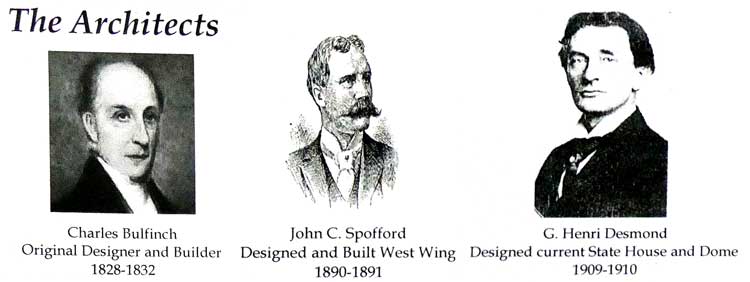
We went up to the second floor. In 1832, this was the original floor known as the Function Room.
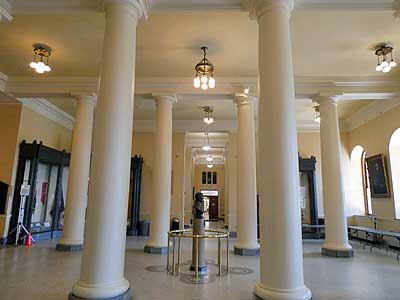
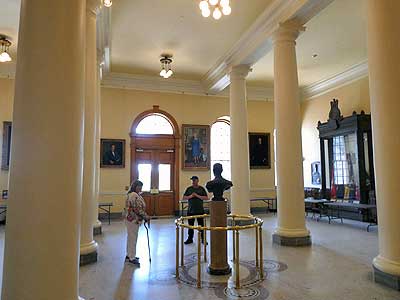
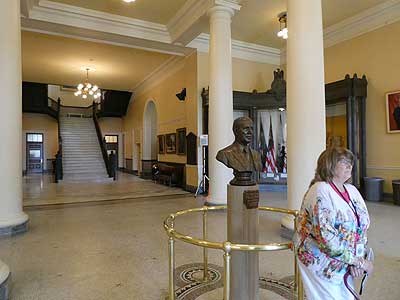
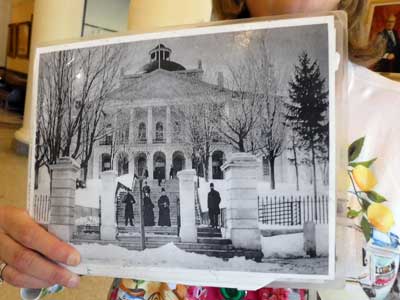
(right) The original building before the 1910 remodel
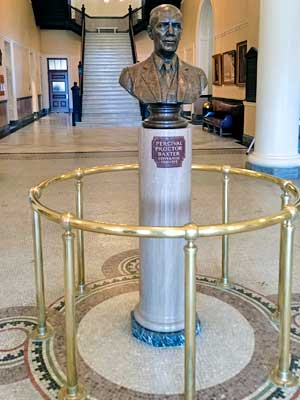
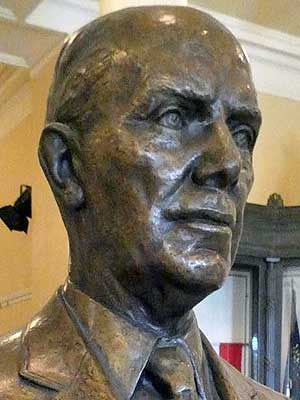
A bust of Percival Proctor Baxter, Governor of Maine from 1921 - 25. Over a 30-year period, he purchased the land for what is now Baxter State Park. He said it could never be turned into a national park.
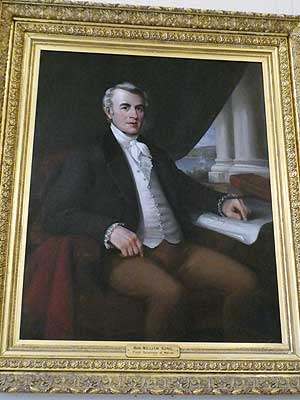
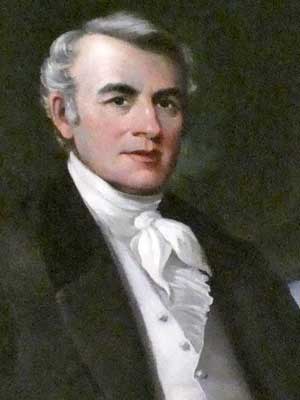
Maine's first governor, William King (1768 - 1852), was a merchant and shipbuilder from Bath, Maine. He also opened the state's first cotton mill and founded a bank.
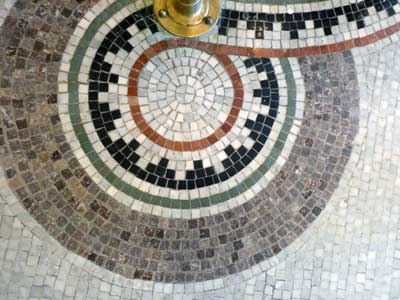
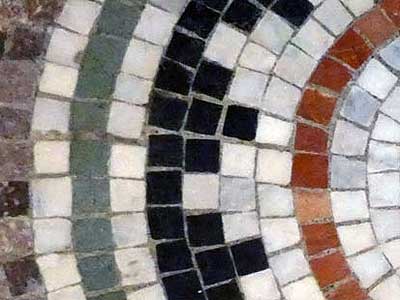
The floor
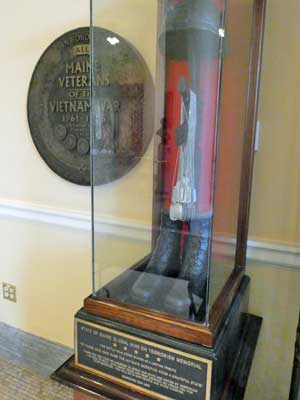
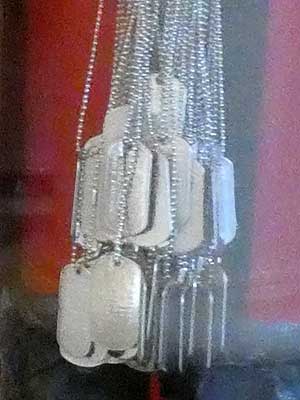
Battlefield Cross Memorial was created in 2008. It is a bronze, life-size model of a rifle, capped by a helmet and with boots at the side. Families of Maine soldiers who died fighting in Iraq and Afghanistan have added the dog tags of their loved ones.
return • continue

